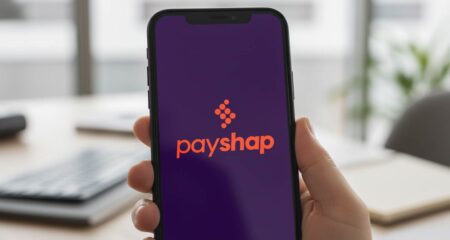
First National Bank’s deliberate move to aggressively shift transaction to its mobile app from other digital (and physical) channels is paying off handsomely.
If recent trends are sustained — and there’s no indication that they won’t be — transaction volumes on its mobile app will overtake those on Internet banking by the end of its financial year in June 2018.
Year-on-year growth rates for volumes on its app have ranged between 60% and 80%, while those for Internet banking have been up between 4% and 15% until the 1% decline in the most recent period.
In the six months to December 2017, nearly 74m transactions were done via the app, versus 104m on Internet banking (these figures exclude the 23m transactions done via USSD services on mobile).
The bank has been using the carrot-and-stick approach via its eBucks rewards programme to drive this behaviour change. Several years ago, reward points were earned if customers did all of their electronic payments and transactions via the app in a month. In July 2016, the bank introduced a qualifying requirement where (under 60) Premier customers had to log into the FNB app at least once a month in order to earn rewards.
Johan Moolman, CEO of eBucks Rewards at FNB, told Moneyweb last year that the results from this change proved the model: the programme drives behavioural change. “App linkages (to online banking profiles) doubled from month one,” he pointed out. “And that trend has continued.”
The acceleration in year-on-year transaction volume growth in December 2016 — to 80% — further illustrates how successful the bank has been in driving behaviour change.
In terms of active app users, rivals remain far behind. Absa says it had 653 000 active users on its mobile app as at December 2017, while Standard Bank reported 848 000 active users as at end-June 2017 (it will provide an update to December on Thursday). Nedbank says it had 891 000 active retail clients across all digital channels as at December 2017.
R27bn/month
Contrast this with FNB, which reported 875 000 active banking app users as far back as June 2014. Today, it has over two million active users, with R27bn in transactions being processed per month (as at October).
Towards the end of last year, FNB CEO Jacques Celliers said that 850 000 customers have used the NAVHome feature on the app (for valuation reports and home loan applications), while 210 000 have used the NAVCar feature for valuations and licence renewals, among others.
Against this migration to digital and especially mobile channels, which the bank has previously described as “faster than expected”, revenues have come under pressure. In 2016 it said this would require a “recalibration” of its branch network.
It’s tackled this on multiple fronts: reducing staff costs (and headcount), moving to a modular approach when fitting out branches, as well as trimming its physical space and footprint. Along with this, it is investing in electronic channels as well as in-branch digital capabilities to take out further costs.
In the six months to December 2017, it has managed to keep overall branch costs flat. The physical footprint of branches is down 7% year on year. In branches, it is pushing to enable customers on its digital channels: online activations via this channel are up 42% year on year, while mobile app activations have more than doubled. Previously, it said the modular approach to fitting out branches saw a 29% reduction in these costs.
In the long term, it aims to keep average cost increases in terms of branch staff to 3%/year, and those related to its long-term leases to just 1%/year. It will continue “rationalising” its property portfolio and operational processes.
- Hilton Tarrant works at immedia
- This article was originally published on Moneyweb and is used here with permission




